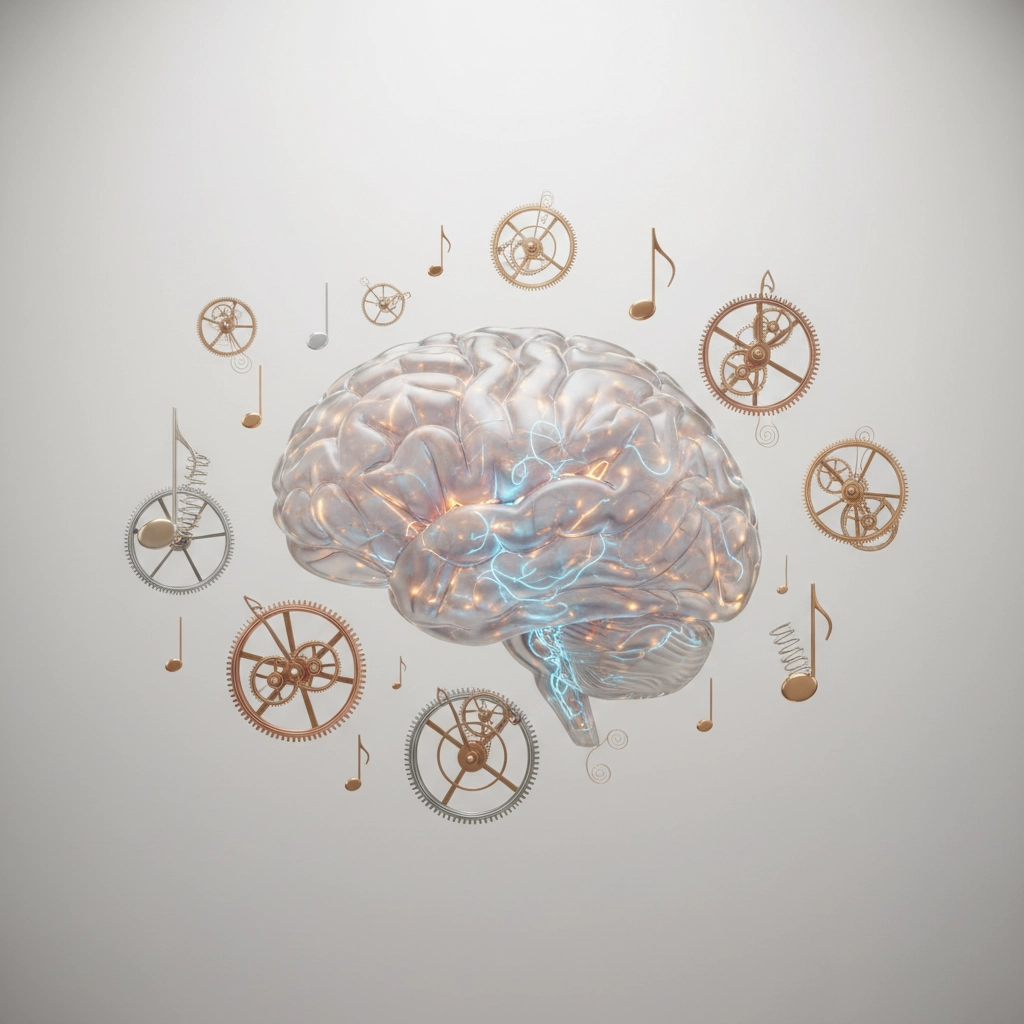When Pain/Anxiety Warps Time: Breaking the Cycle for Lasting Relief
- Joana

- Sep 22
- 5 min read
The Jewish New Year has just arrived, autumn is settling in, and time feels both cyclical and linear: a paradox our brains navigate every day. But what happens when pain or anxiety hijack this natural flow? When minutes stretch into eternities, or when racing thoughts compress hours into frantic heartbeats?
If you've ever noticed that your pain flares on the same day each week, or that certain anniversaries trigger waves of anxiety, you're experiencing something profound: your brain has learned a cycle, and it's repeating it with clockwork precision.
Understanding how pain and anxiety warp our perception of time, and how our brains learn these patterns, gives us the key to breaking free.
The Brain's Distributed Orchestra of Time
Forget the idea of a single internal clock ticking away in your head. Recent neuroscience reveals something far more fascinating: your brain operates multiple timing systems simultaneously, like an orchestra with different sections keeping rhythm.
Your frontal cortex handles complex timing decisions. Your basal ganglia coordinate movement timing. Your cerebellum fine-tunes precision. Your hippocampus weaves temporal sequences into memory. Each system contributes to your subjective experience of duration, and when pain or anxiety disrupts this orchestra, the music becomes distorted.
This distributed approach explains why time can feel so malleable. Research by Wittmann (2009) shows that there's no single "time sense": instead, felt time emerges from the constant interaction between your attention, your body's internal signals (interoception), your memory, and your emotions.

When Pain Stretches Every Second
Picture this: You're lying in bed at 3 AM, lower back seized in spasm. Each minute crawls by with excruciating slowness. You check your phone: surely it's been an hour? Only twelve minutes have passed.
This isn't your imagination. Pain literally stretches subjective time. Here's why:
When you're in pain, your attention becomes laser-focused on the discomfort. High arousal and concentrated attention create what researchers call "temporal dilation": time expands. Your nervous system, flooded with stress signals, processes each moment in slow motion, cataloguing every sensation as potentially dangerous.
Your interoceptive awareness: how intensely you feel internal body signals: also skyrockets during pain episodes. The stronger these signals, the more "continuous" time feels, creating that endless, dragging quality that makes pain so psychologically exhausting.
But here's the crucial part: Each time this happens, your brain learns. The neural pathways that connect pain, attention, and stretched time become more efficient. What starts as an acute response gradually becomes a chronic pattern.
How Anxiety Hijacks Time's Flow
Anxiety warps time differently than pain, but equally powerfully. If pain stretches time, anxiety can make it race, loop, or fragment entirely.
Consider the classic anxiety spiral: You're worried about an upcoming appointment. Your mind races through every possible scenario, jumping between past regrets and future catastrophes. Suddenly, you realize you've been "thinking" for what felt like minutes, but two hours have vanished. Your brain is rehearsing all sorts of different scenarios, each producing a corresponding bodily state. In your brain, there is no difference between imagined events and real events. You've just gone through the whole thing all at once.
This happens because anxiety fragments your attention across multiple timeframes. Research from Apaydın and colleagues (2018) reveals that timing and reward anticipation share the same brain circuits: particularly dopamine-modulated loops in your striatum. When you're anxious, you're constantly anticipating either reward (relief) or punishment (more stress), and this expectation literally warps how time passes.
The waiting becomes everything. Minutes until a medical test feel eternal. Hours until a difficult conversation compress into frantic preparation. Your brain, designed to help you survive, gets stuck in temporal loops that make the present moment almost impossible to inhabit.

The Learning Brain: How Cycles Become Prison
Here's where the story gets both darker and more hopeful. Our brains learn what they experience. Every time you cycle through pain-induced temporal distortion, or anxiety-driven time fragmentation, you're literally training your nervous system to repeat these patterns.
Fontes and colleagues (2016) demonstrate that timing systems throughout your brain are constantly modulated by emotion, attention, memory, and disease states. When chronic pain or anxiety becomes your daily reality, these modulators shift into a persistent pattern. Your brain becomes exquisitely skilled at warping time in response to discomfort.
This is why pain and anxiety often feel so automatic, so inevitable. You're not imagining that Tuesday afternoons trigger your back spasms, or that certain weather patterns bring waves of panic. Your brain has learned these cycles so well that it anticipates them, preparing your entire nervous system to enter familiar patterns of temporal distortion.
The paradox? The same neuroplasticity that traps you in these cycles is exactly what can free you.
Stepping Out: The NeuroSomatic Approach
Breaking free from pain and anxiety cycles isn't about willpower: it's about interruption, variation and differentation. You must create a pause, however brief, in the automatic pattern. This is where NeuroSomatic Therapy offers something revolutionary.
Instead of fighting pain or anxiety directly, we work with the temporal distortions they create. When you're caught in stretched time (pain) or fragmented time (anxiety), the key is to introduce a different rhythm, a new temporal experience that your brain can learn instead.
Research by Kondo, Gheorghiu, and Pinheiro (2024) confirms that time perception is inherently malleable. Because timing is plastic across all scales: from milliseconds to decades: targeted interventions can reliably reshape how time feels.
The practice becomes simple: Notice when you're caught in a temporal distortion. Instead of trying to escape the pain or calm the anxiety, gently shift your attention to a different rhythm: your breath, the sensation of your feet on the ground, even the tick of a clock.
This isn't distraction. This is neural education. You're teaching your distributed timing systems a new song.

The French Connection: Retour à soi
In French, we have a beautiful concept: retour à soi: returning to oneself. But as we explored in NeuroNotes, you never return to exactly who you were before. You return to yourself as a learning, becoming being.
This applies perfectly to breaking temporal distortions. You're not trying to return to some mythical state where pain and anxiety never affected your time perception. Instead, you're returning to your innate capacity to inhabit time fluidly, with the wisdom of having journeyed through distortion and emerged more conscious.
Every cycle: whether seasonal, weekly, or moment-to-moment: offers this invitation. The key is recognizing that movement, not stasis, is the essence of life. Even in pain, even in anxiety, there is always the possibility of temporal fluidity, of stepping into a different rhythm.
Beyond the Hamster Wheel
The cyclical nature of life doesn't have to be a prison. When we understand how pain and anxiety hijack our brain's timing systems: and how these patterns become learned responses: we discover something profound: change begins with awareness and a single conscious pause.
Your brain, so skilled at learning cycles of distortion, is equally capable of learning cycles of freedom. Each moment you step out of automatic temporal patterns, you're not just finding relief: you're teaching your nervous system a new way of inhabiting time.
This is the true gift of understanding how pain warps time. It's not about eliminating discomfort entirely, but about reclaiming your sovereignty over how you experience duration, rhythm, and the precious flow of moments that make up your life.
Ready to explore how NeuroSomatic Therapy can help you step out of painful cycles and into temporal freedom? Your brain is already learning. The question is: what do you want it to practice?




Comments